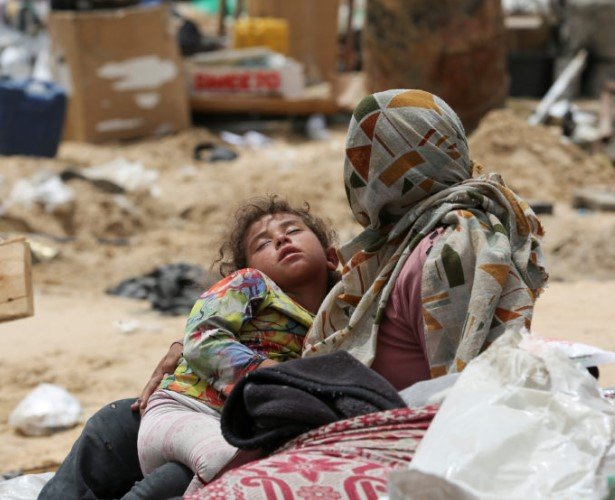Teams from the Red Cross and Egypt have started searching areas deep in Gaza beyond the ceasefire line to find bodies of dead hostages. This move comes as part of a fragile truce between Israel and Hamas, with operations kicking off on October 27, 2025, after Israel gave the green light.
Background on the Gaza Ceasefire
The ceasefire took hold on October 10, 2025, brokered by the United States. It aims to stop the fighting that has dragged on for years and bring back remains of those lost in the conflict.
This deal requires Hamas to return all hostage bodies quickly. In return, Israel agrees to hand over Palestinian bodies at a rate of 15 for each hostage body. So far, 15 hostage bodies have come back, and Israel has released 195 Palestinian remains. The truce has held, but tensions stay high as both sides watch each other closely.
Experts say this agreement builds on past talks. It follows intense battles that left much of Gaza in ruins. The focus now is on recovery to give families closure and keep peace talks moving.

Recent events show progress. Just last week, more bodies were handed over in northern Gaza. This has raised hopes, but also fears that not all remains will be found soon due to the widespread damage.
Details of the Search Operation
Red Cross and Egyptian teams crossed the “yellow line,” which marks where Israeli forces pulled back. They entered zones still under Israeli control but now open for this humanitarian work.
The Egyptian group brought heavy gear like excavators and bulldozers. Their job is to dig through rubble in places hit hard by earlier fights. Hamas has joined in some searches, with approval from Israel, to speed things up.
Operations started early on October 27, 2025. Teams focus on spots where hostages might be buried, based on tips from both sides. So far, they aim to find the remains of 13 missing Israeli hostages.
Here are key facts about the ongoing efforts:
- Teams work in coordinated shifts to cover more ground safely.
- International mediators watch to make sure the truce holds during searches.
- Searches happen in southern and northern Gaza, including areas like Khan Younis and Rafah.
This setup shows how the ceasefire allows for such joint work, which was impossible before.
The process involves careful steps. First, teams map out risky zones. Then, they use tools to clear debris without causing harm. Finally, any found remains go through checks before handover.
Challenges in Recovering Remains
Finding bodies in Gaza is tough due to the massive destruction. Bombed buildings and collapsed tunnels make it hard to reach buried spots.
One big issue is the time it takes. The Red Cross has warned that full recovery could last weeks or more. Hamas missed an early 72-hour deadline, adding to delays.
Safety risks are high. Unexploded bombs and unstable ruins pose dangers to workers. Weather and limited access also slow things down.
| Challenge | Description | Impact on Search |
|---|---|---|
| Rubble Volume | Tons of debris from bombings cover potential sites. | Delays digging and increases equipment needs. |
| Security Risks | Ongoing tensions could spark incidents. | Requires constant monitoring by mediators. |
| Identification | Remains must be verified accurately. | Slows handover and adds emotional strain. |
| Coordination | Multiple groups must work together smoothly. | Any misstep could break the fragile truce. |
These hurdles highlight why experts call this a complex mission. Logical reasoning suggests that without better tech like drones for mapping, full success might stay out of reach.
Families wait anxiously, knowing that each day without news adds to their pain. Past recoveries have brought mixed feelings of relief and grief.
Role of International Groups
The Red Cross plays a key part as a neutral helper. They handle transfers and make sure rules are followed. Egyptian teams bring local knowledge and tools, aiding in tough terrain.
This fits into broader global efforts. The US, under its brokered deal, pushes for quick results. Other countries that back Palestinian statehood have joined monitoring hubs.
Trump’s involvement in the talks has been noted, tying into his past role in Middle East peace efforts. This adds a layer of political weight to the operations.
Cooperation here could set a model for future deals. It shows how outside help can bridge gaps in heated conflicts.
Impact on Families and Society
For families of the hostages, this search brings hope mixed with heartache. Many have waited over two years since the October 7, 2023, attacks that started the latest wave of violence.
Returning remains allows proper burials and closure. It also honors the dead, which is vital in both Israeli and Palestinian cultures.
On a wider scale, successful recoveries could build trust. This might lead to talks on live hostages or rebuilding Gaza. Current data shows over 40,000 deaths in the conflict, underscoring the need for lasting peace.
Communities on both sides feel the strain. In Israel, public calls for action grow. In Gaza, humanitarian needs soar amid the truce.
What Lies Ahead for the Truce
Looking forward, the search’s success will test the ceasefire’s strength. If all bodies return soon, phase two of the deal could start, focusing on live releases and aid.
Experts predict challenges but see room for progress. Related events, like recent drone flights over Gaza for monitoring, show tech’s role in keeping peace.
The world watches closely. Any breakthrough could inspire similar efforts in other conflicts.
Share your thoughts on this developing story in the comments below. If it moves you, pass it along to others who care about peace in the region.
